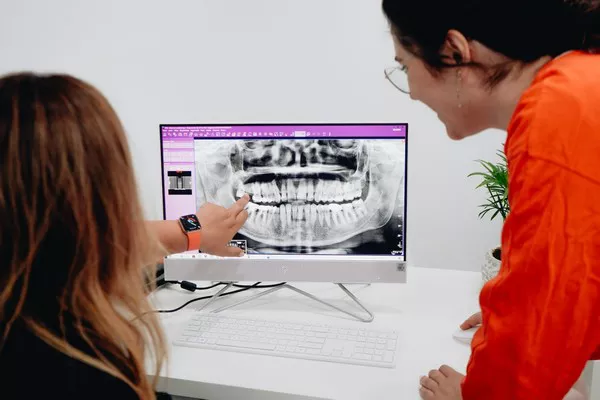Gum disease, also known as periodontitis, is a common yet serious infection of the gums and the supporting bone structures of the teeth. It is a major cause of tooth loss in adults but is highly preventable and manageable with proper care. Healthy gums are crucial not just for maintaining oral health, but for overall well-being as well. Research has shown that gum disease can have a significant impact on other bodily systems, potentially contributing to conditions such as heart disease, diabetes, and respiratory issues. This article explores the different types of gum disease, their causes, symptoms, and the importance of prevention and treatment.
Types of Gum Disease
Gingivitis
Gingivitis is the earliest stage of gum disease. It is characterized by inflammation and redness of the gums, primarily caused by plaque buildup at the gumline. The symptoms of gingivitis are usually mild and include:
- Red, swollen, and tender gums
- Bleeding gums when brushing or flossing
- Bad breath
Gingivitis is reversible with proper oral hygiene practices, such as regular brushing and flossing, and professional dental cleanings. If left untreated, however, gingivitis can progress to a more severe form of gum disease known as periodontitis.
Periodontitis
Periodontitis is an advanced stage of gum disease where the infection spreads beyond the gums to the supporting bone, causing significant damage and potential tooth loss. There are several types of periodontitis, each with distinct characteristics:
Chronic Periodontitis
Chronic periodontitis is the most common type of gum disease. It is characterized by slow progression and gradual bone loss. The symptoms often include:
- Receding gums
- Formation of deep pockets between teeth and gums
- Loose or shifting teeth
- Persistent bad breath
- Gum inflammation and bleeding
Aggressive Periodontitis
Aggressive periodontitis is less common but more severe, characterized by rapid progression and significant bone loss. It often affects younger individuals and can lead to tooth loss if not promptly treated. Symptoms are similar to those of chronic periodontitis but progress more quickly, including:
- Rapid gum recession
- Deep periodontal pockets
- Severe bone loss
- Loose teeth
Necrotizing Periodontitis
Necrotizing periodontitis is a rare but severe form of gum disease that can cause rapid tissue destruction and extreme pain. It is often associated with compromised immune systems, malnutrition, and chronic stress. Symptoms include:
- Severe gum pain
- Extensive tissue necrosis (death of gum tissue)
- Ulcers on the gums
- Foul breath
- Pus around teeth
Causes of Gum Disease
The primary cause of gum disease is plaque buildup, a sticky film of bacteria that forms on the teeth. However, several contributing factors can increase the risk of developing gum disease, including:
Poor Oral Hygiene
Inadequate brushing and flossing allow plaque to build up on the teeth and gums, leading to the formation of tartar, which can only be removed by a dentist. Persistent plaque and tartar buildup cause gum inflammation and eventually lead to gum disease.
Smoking
Smoking and the use of tobacco products significantly increase the risk of gum disease. The nicotine and other chemicals in tobacco reduce blood flow to the gums, impairing the immune response and making it harder for the gums to heal from infections.
Certain Medications
Some medications can cause dry mouth, reducing the flow of saliva, which helps protect the teeth and gums. A lack of saliva can lead to increased plaque buildup and a higher risk of gum disease. Medications that may cause dry mouth include antihistamines, decongestants, painkillers, and antidepressants.
Medical Conditions
Certain medical conditions can increase susceptibility to gum disease. Diabetes, for example, impairs the body’s ability to use blood sugar and increases the risk of infections, including gum infections. HIV/AIDS and other conditions that affect the immune system can also make individuals more prone to gum disease.
See Also: Is Periodontal Disease Serious
Symptoms of Gum Disease
Identifying the symptoms of gum disease early can help prevent its progression. The symptoms vary depending on the stage of the disease:
Gingivitis
- Red, swollen, and tender gums
- Bleeding during brushing or flossing
- Bad breath
Periodontitis
- Receding gums
- Formation of deep pockets between teeth and gums
- Loose or shifting teeth
- Persistent bad breath
- Gum inflammation and bleeding
- Pus around teeth
If any of these symptoms are present, it is important to seek professional dental care promptly to prevent further damage.
Treatment and Prevention
Treating gum disease effectively involves professional dental care and improved oral hygiene practices.
Gingivitis Treatment
For gingivitis, treatment typically involves professional cleaning to remove plaque and tartar, along with improved oral hygiene practices at home. This includes brushing at least twice a day, flossing daily, and using mouthwash to reduce plaque buildup. Regular dental check-ups and cleanings are crucial for maintaining gum health.
Periodontitis Treatment
Treating periodontitis often requires more intensive procedures:
Scaling and Root Planing: Scaling and root planing is a deep cleaning procedure that involves removing plaque and tartar from above and below the gumline and smoothing the root surfaces to prevent further plaque buildup. This helps to reduce inflammation and allow the gums to reattach to the teeth.
Gum Grafting: In cases of severe gum recession, gum grafting may be necessary. This surgical procedure involves taking tissue from another part of the mouth (or using donor tissue) to cover exposed roots and restore the gumline.
Bone Grafting: For patients with significant bone loss, bone grafting may be needed to rebuild the lost bone and provide a stable foundation for the teeth. This procedure involves placing bone graft material into the affected area to stimulate new bone growth.
Prevention
Preventing gum disease is possible with good oral hygiene practices and lifestyle choices:
Regular Brushing and Flossing: Brush at least twice a day with fluoride toothpaste and floss daily to remove plaque and food particles from between the teeth and along the gumline.
Professional Dental Cleanings: Visit your dentist at least twice a year for professional cleanings and check-ups to remove plaque and tartar buildup and detect early signs of gum disease.
Quitting Smoking: Smoking significantly increases the risk of gum disease, so quitting can greatly improve gum health.
Controlling Medical Conditions: Managing conditions like diabetes and maintaining a healthy immune system can reduce the risk of gum disease. Follow your doctor’s advice and take medications as prescribed.
Conclusion
Gum disease, ranging from the early stage of gingivitis to the more severe periodontitis, is a common yet preventable and treatable condition. Understanding the types of gum disease, their causes, symptoms, and treatment options is crucial for maintaining oral and overall health. Regular dental care and good oral hygiene practices are key to preventing and managing gum disease. If you experience any symptoms of gum disease, consult a dentist for early detection and personalized treatment. By prioritizing your oral health, you can prevent the progression of gum disease and maintain a healthy, bright smile.
You Might Be Interested In
































